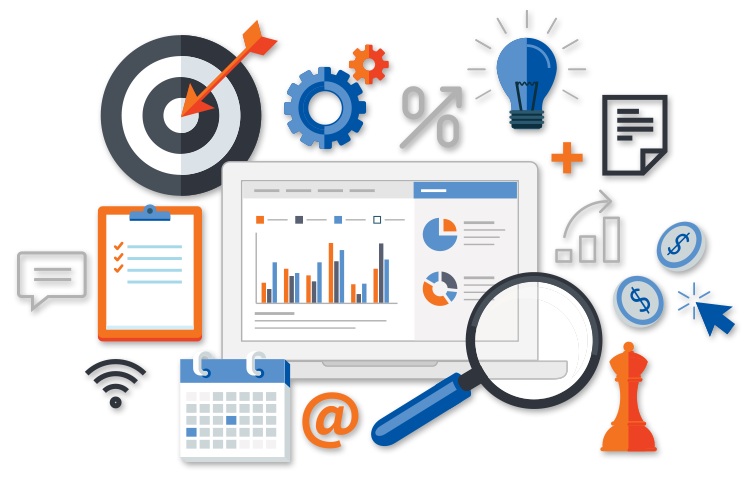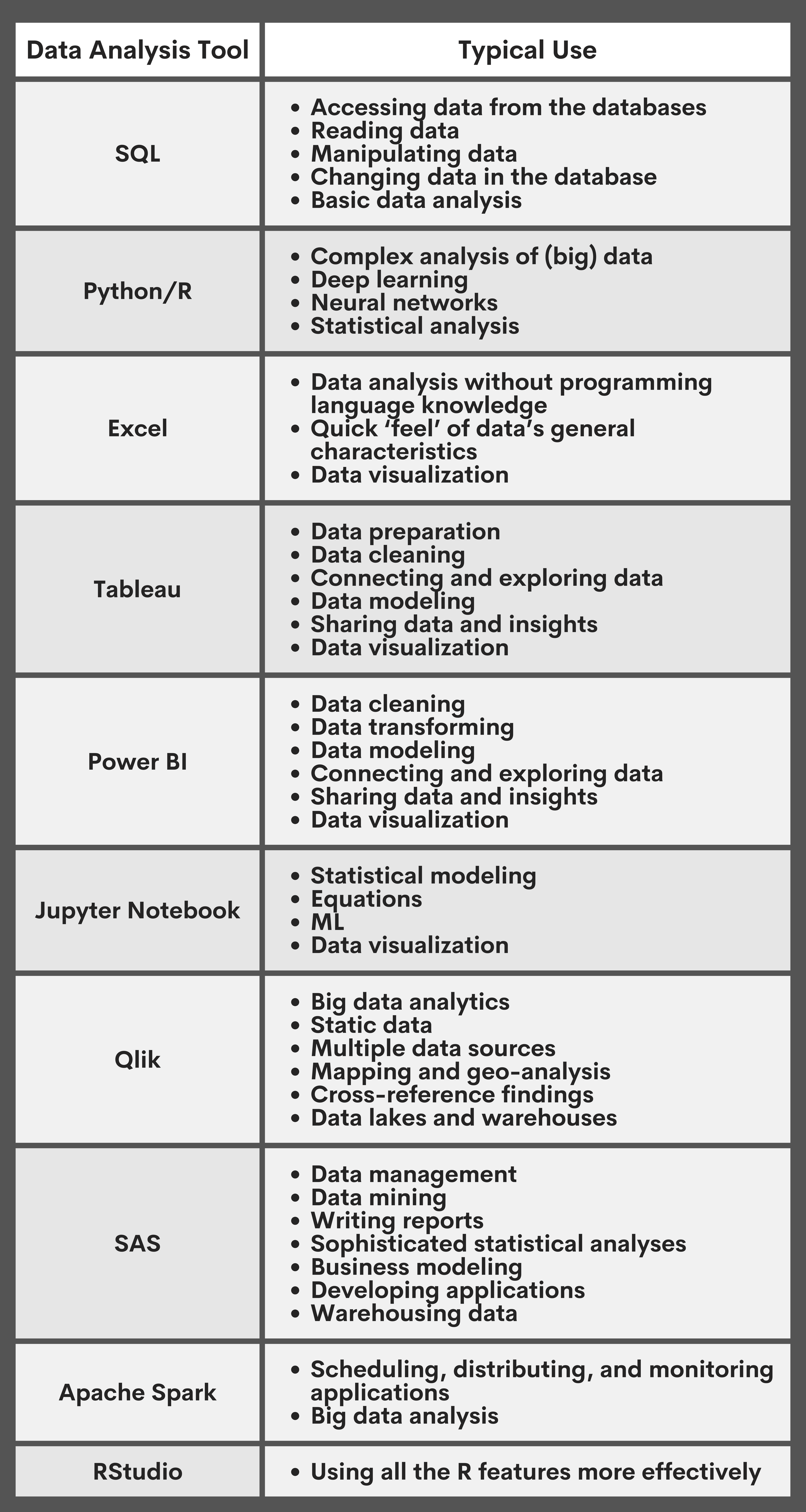Take Advantage Of Predictive Analytics for Future-Ready Choices
Take Advantage Of Predictive Analytics for Future-Ready Choices
Blog Article
Increase Performance and Earnings With Data Analytics
In today's data-driven landscape, organizations are significantly acknowledging the essential role of data analytics in boosting functional efficiency and productivity. By methodically examining data, organizations can reveal vital understandings that inform tactical decisions, streamline processes, and dressmaker client experiences.
Comprehending Information Analytics
In today's data-driven landscape, recognizing information analytics is crucial for companies intending to boost operational efficiency and drive earnings. Data analytics entails the methodical computational analysis of data collections to reveal patterns, correlations, and understandings that educate decision-making. By employing numerous techniques, such as analytical evaluation, equipment discovering, and anticipating modeling, companies can transform raw information right into workable knowledge.
The process commonly begins with data collection, where pertinent information is collected from numerous sources, including transactional data sources, customer interactions, and market trends. This data is then cleaned up and arranged to make certain precision and uniformity. As soon as the information is prepared, logical devices and software are made use of to picture the information and discover, making it possible for stakeholders to recognize abnormalities and fads.
Inevitably, recognizing information analytics encourages organizations to make informed decisions based upon empirical proof instead than instinct. It facilitates targeted strategies that can enhance resource allocation, boost consumer contentment, and boost general performance. As organizations significantly acknowledge the value of data-driven understandings, a solid grasp of information analytics ends up being an important proficiency for teams and leaders alike, placing them for sustained success in a competitive environment.

Key Benefits for Services
Services that take advantage of information analytics can unlock a multitude of benefits that considerably boost their operations and profitability. One of the primary advantages is improved decision-making. Information analytics provides workable insights originated from real-time information, enabling organizations to make educated choices that align with market needs and customer choices.

Furthermore, information analytics promotes boosted consumer experiences. By recognizing customer habits and choices, organizations can tailor their offerings, leading to increased fulfillment and loyalty. This customized approach frequently causes higher conversion rates and repeat service.
Moreover, information analytics makes it possible for organizations to identify emerging fads and opportunities. By staying in advance of the curve, companies can profit from brand-new markets and technologies before their rivals.
Applying Data-Driven Approaches
Effective execution of data-driven methods needs a comprehensive understanding of both organizational objectives and offered data resources. Organizations must initially define their objectives plainly, making certain positioning between information initiatives and critical aims. This clarity enables groups to concentrate on relevant link metrics and insights that drive decision-making.
Top quality information is important for precise analysis, as inadequate information can lead to misguided methods and lost resources - Analytics. Organizations needs to develop procedures for data collection, cleansing, and monitoring to preserve information integrity.
In addition, fostering a data-driven culture is important. Staff members in all levels ought to be urged to take advantage of information in their daily operations. Training programs and workshops can improve information proficiency, equipping personnel to make informed decisions based upon analytical insights.
Tools and Technologies Introduction
A durable suite of innovations and tools is crucial for organizations aiming to harness the complete potential of information analytics. These devices promote the collection, handling, and visualization of information, allowing organizations to derive workable understandings.
At the fundamental degree, data monitoring systems such as SQL data sources and NoSQL systems supply reliable information storage space and retrieval capabilities. For data handling and evaluation, programming languages like Python and R, together with structures such as Apache Spark, enable intricate estimations and artificial intelligence applications.
Visualization devices, consisting of Tableau and Power BI, change raw information into user-friendly visual formats, making understandings accessible to stakeholders in all levels. Additionally, cloud-based systems like Google Cloud and AWS supply scalable storage space and handling services, suiting the expanding volumes of data companies encounter.
For innovative analytics, predictive modeling and AI-driven solutions are try these out significantly embraced, allowing business to forecast fads and boost decision-making processes. Incorporating these devices into existing operations is vital; companies that effectively leverage this modern technology can considerably improve operational effectiveness and drive profitability. Therefore, purchasing the right tools and modern technologies is a calculated vital for any data-driven company.
Instance Studies of Success
Leveraging data analytics has led countless companies to attain impressive enhancements in efficiency and success. One significant instance is a large retail chain that implemented predictive analytics to optimize stock administration. By assessing historical sales information and customer trends, the company minimized excess inventory by 30%, causing substantial cost financial savings and improved cash flow.
Another example can be found in the manufacturing industry, where a leading automotive maker used information analytics to improve its manufacturing processes. By monitoring machine performance in real-time, the organization identified inefficiencies and bottlenecks, resulting in a 20% rise in total devices efficiency (OEE) This not just boosted production rates but look at here now likewise reduced downtime and maintenance costs.

These case studies illustrate how data analytics can drive calculated decision-making, maximize processes, and eventually boost both effectiveness and profitability across numerous industries.
Verdict
In verdict, the assimilation of information analytics right into business procedures presents significant chances for improving performance and success. By systematically examining data, organizations can identify inefficiencies, optimize customer experiences, and make informed decisions.
In today's data-driven landscape, recognizing data analytics is vital for companies aiming to enhance operational effectiveness and drive success. Information analytics involves the methodical computational evaluation of information sets to reveal patterns, correlations, and understandings that notify decision-making. Data analytics offers workable understandings derived from real-time data, permitting organizations to make enlightened selections that align with market needs and consumer preferences.
Top quality data is vital for accurate analysis, as poor information can lead to illinformed methods and wasted resources. Organizations needs to establish procedures for data collection, cleansing, and management to preserve information stability.
Report this page